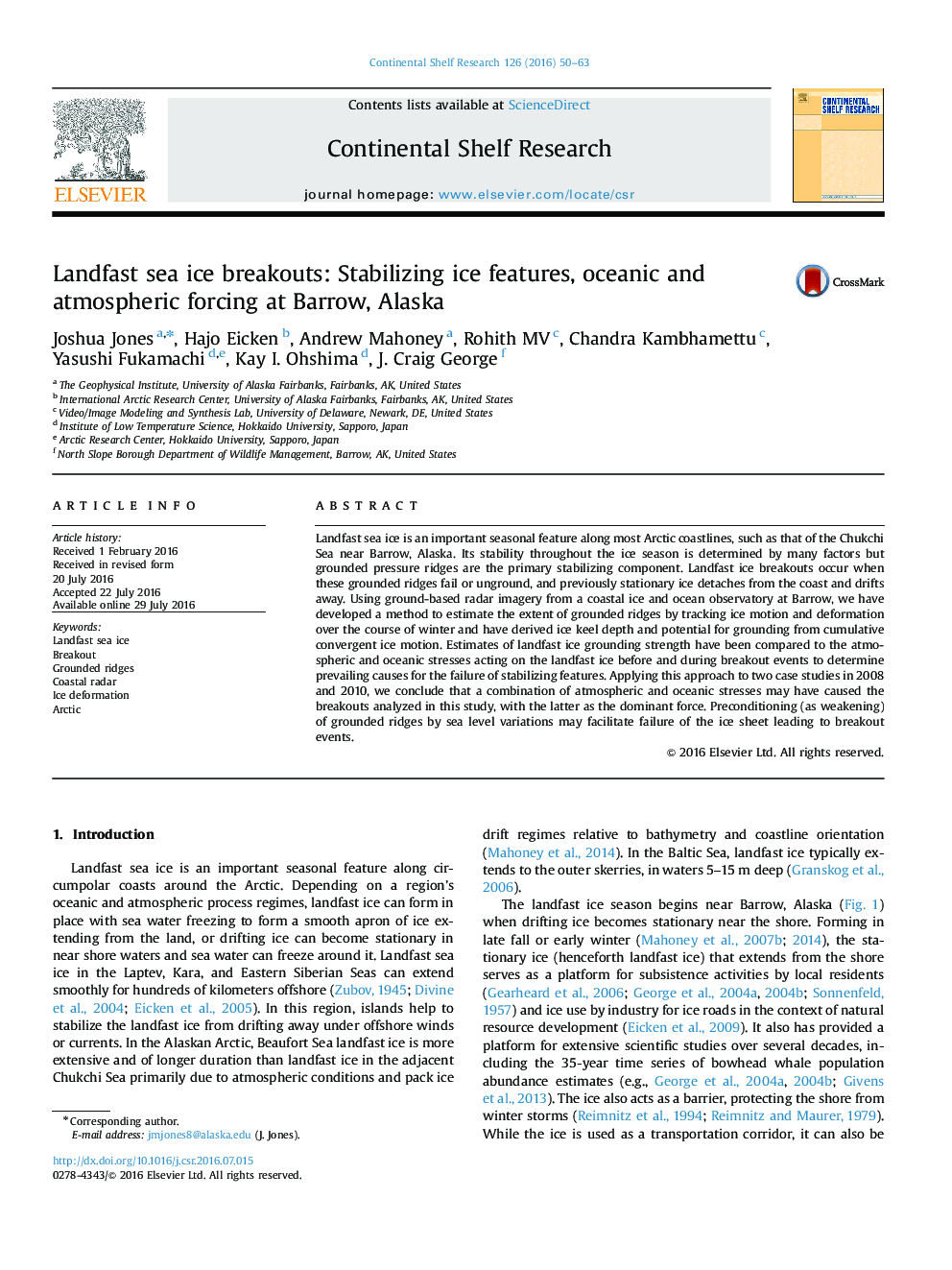| Article ID | Journal | Published Year | Pages | File Type |
|---|---|---|---|---|
| 4531521 | Continental Shelf Research | 2016 | 14 Pages |
•Sea ice convergence can be calculated from a coastal radar system.•Wind and ocean stresses can overcome anchoring strength of grounded sea ice pressure ridges.•A landfast ice cover can be preconditioned for a breakout event by reducing anchoring strength.
Landfast sea ice is an important seasonal feature along most Arctic coastlines, such as that of the Chukchi Sea near Barrow, Alaska. Its stability throughout the ice season is determined by many factors but grounded pressure ridges are the primary stabilizing component. Landfast ice breakouts occur when these grounded ridges fail or unground, and previously stationary ice detaches from the coast and drifts away. Using ground-based radar imagery from a coastal ice and ocean observatory at Barrow, we have developed a method to estimate the extent of grounded ridges by tracking ice motion and deformation over the course of winter and have derived ice keel depth and potential for grounding from cumulative convergent ice motion. Estimates of landfast ice grounding strength have been compared to the atmospheric and oceanic stresses acting on the landfast ice before and during breakout events to determine prevailing causes for the failure of stabilizing features. Applying this approach to two case studies in 2008 and 2010, we conclude that a combination of atmospheric and oceanic stresses may have caused the breakouts analyzed in this study, with the latter as the dominant force. Preconditioning (as weakening) of grounded ridges by sea level variations may facilitate failure of the ice sheet leading to breakout events.
